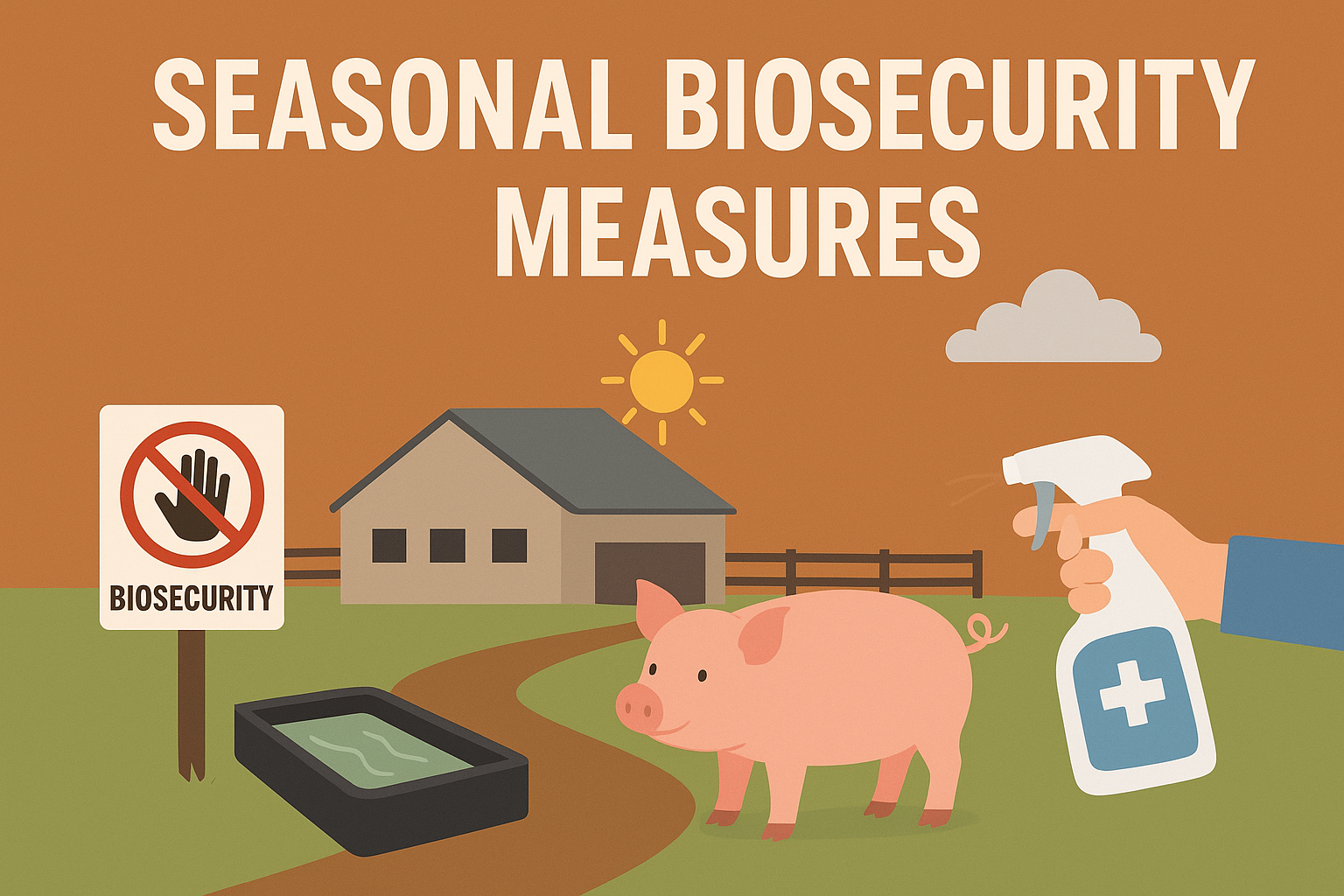Biosecurity in pig farms must adapt throughout the year as changing weather conditions influence disease risks. Seasonal biosecurity measures ensure pigs are protected against common pathogens that thrive in specific climates. By adjusting protocols according to the season, farmers can safeguard their herd’s health and prevent costly outbreaks.
Seasonal Biosecurity Strategies
Dry Season (Summer)
- Hydration & Cooling: Ensure pigs have access to clean water and shade to prevent heat stress.
- Dust Control: Minimize dust buildup that can irritate respiratory systems and spread disease.
- Insect Control: Flies and mosquitoes increase during hot weather—use traps and repellents.
Rainy Season
- Flood Prevention: Keep pens dry with proper drainage to prevent standing water that harbors bacteria.
- Footbath Reinforcement: Increase frequency of disinfectant changes in muddy conditions.
- Rodent Control: Wet weather drives rodents into barns, increasing disease transmission risks.
Cold Season
- Ventilation: Prevent respiratory issues by balancing airflow with warmth.
- Bedding Management: Provide dry, clean bedding to reduce moisture buildup.
- Vaccinations: Schedule timely vaccines to strengthen immunity against seasonal diseases.
General Year-Round Measures
- Maintain strict visitor control and disinfection protocols.
- Regularly check pig health and isolate sick animals immediately.
- Keep records of seasonal disease trends to anticipate outbreaks.
Conclusion
Seasonal biosecurity measures play a vital role in maintaining pig health. By anticipating seasonal risks—whether heat stress in summer, flooding in rainy months, or respiratory diseases in cold weather—farmers can proactively protect their herds and ensure consistent productivity.

